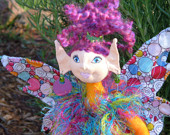Ivy
I am a day late in posting this, but yesterday I was working and didn't finish until late so I decided to post today when I had more time and relaxation. I am keeping with the theme of plants from the Hedgerow for my pagan blog because looking at the properties and uses of these plants is so interesting to me that it has now become a personal journey and project for me. So without further ado here is my topic about Ivy.
The Celtic month of
ivy falls from September 30 until October 27 and its Celtic name is Gort. Ivy is a plant which is linked to Jupiter and
also the sun. Ivy is sacred to both
Osiris and Saturn and is connected to the god Dionysus. The legend with Dionysus
tells us that when Hera wife of Zeus found out that her husband had been
unfaithful to her with Semele the daughter of Cadmus king of Thebes
A talisman which is made from Ivy would be good to give to a friend as it helps to bond and ensure good friendship. It can also be used to bind love, fidelity or luck to a person and when growing on or near a house offers protection against the evil eye.
If ivy does not grow
on the grave of an individual it is said that it is because their soul is
restless. Ivy is used in Yule
decorations along with holly.
Medicinal herbal use
of Ivy include using ivy leaves to make a douche to treat female infections,
the leaves can also be used externally as a poultice for infections, ulcers,
nerves and sinews. The tender twigs of
Ivy can be simmered and made into a salve to treat sunburn.
Protection Charm
2 equal length Rowan
twigs
Red thread
Tendrils of fresh Ivy
Make an equal armed
cross with the Rowan Twigs and tie it with the red thread, this can be ribbon,
wool or string as long as it is red. Ensure you tie some of the string at the
end of one of the arms of the cross so it can be suspended. Intertwine the Ivy around the cross saying
As I wrap this Ivy round
Protection to me and
mine be bound
I hang this protection
charm by my door
Harm and evil be gone
for ever more.
So mote it be











